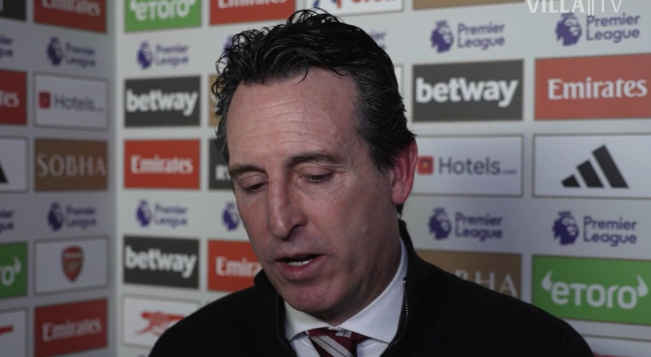
Italian soccer won all three of its group stage matches with zero shutouts and progressed smoothly, convincing and even admiring both its record and the process of the matches, making it one of the favorites to win the championship. In contrast, Germany, although the road to qualification is quite thrilling, but with 4-2 reversal of Portugal's excellent performance, managed to achieve a strong dialog victory. If they can beat England in the bottom half of the table, Germany's road ahead will become smooth. In this year's Euro, both Italy and Germany have shown certain changes in temperament. Will this Euro become a turning point for the revival of German and Italian soccer?
Discussions about revival in these two soccer powers are undoubtedly based on a less-than-stellar period in the past:
Both teams have not fared well in tournaments: Italy did not qualify for the World Cup in Russia, Germany was eliminated in the group stage of the defending champions, and even more recently Germany had suffered a 0-6 defeat in a tough match;
At the league level, the Bundesliga and Serie A have long dominated, but neither team is in the top tier in terms of domestic and international competitiveness, economic level and star power;
In terms of talent development, Italy lacks stars, and this tournament is no exception, with the star of the tournament dimming; Germany has a shortage of talent in certain positions: the center back position relies on Hummels to hold up, and the center forward and right back are almost always guest players from other positions.
So what has changed for both teams in this tournament?
Italy's technical and tactical changes have been a pleasant surprise, with a combination of passing, small quickness and high pressing, and with their own defensive foundation and anti-reverse genes, they have accomplished an excellent tactical fusion, creating a highly ornamental passing game, while not being afraid to counter-attack, scoring goals as well as zeroing in on their opponents!
Germany, on the other hand, is mainly reflected in the change of mental outlook: tactically, there is no change, still the 3 center back system and passing; personnel gap is also unchanged, but the return of Muller (the ability to press and dispatch in front of the field is improved) and the adjustment of Kimmich (to adapt to the playing style of the side defender), the steadiness of Hummels as well as the growth of Havoc and Mushayla, etc. are all water under the bridge. The change in mental outlook was the most significant: Müller was able to command, Kimmich also became tough (extroverted leader), and Hummels and Neuer's steadiness made Germany's game situation more dynamic.
Are they the favorites in this tournament? Apparently not!
Italy's tactical transformation has not yet been fully completed, the strength of the ball player still needs to be honed (the front court will also waste chances, the strength of the opponents in the group stage is average, and the state of affairs appeared prematurely); Germany's tactical problems (too obsessed with passing and control, lack of rhythmic changes and aggression), personnel problems and offensive and defensive balance problems (Kroos and Gündoğan's rear back combination, the defense is still average) have all always existed, in which the characteristics of the personnel and tactical formations do not Matching problems are particularly obvious, such as the two wingbacks are good at footwork but not good at breakthroughs, and there is a natural disconnect with the three center back system.
But the infrastructure of both teams is already in place and the future is very bright:
Italy's technical and tactical transformation has been basically formed, the bones of the simplicity of the attack with the accuracy of the defense, moved forward to the midfield, in line with the modern soccer technical and tactical trends, from its own basis of enhancement rather than copying and copying, more suitable;
Germany's head coach Flick will make adjustments to the formation and tactics after taking office, such as the double back of Kimmich and Magneto, return to the four-guard formation, and the technical and tactical system directly replicates Bayern's Champions League model, although the lack of Levin, but the aggressiveness of the technical and tactical and ornamental, as well as the level of Flick's personal coaching and charisma, the future is worthy of anticipation.
As for the long-term talent pool: Italy has some talents emerging, such as Locatelli, small Chiesa, etc., but they lack the training in the top league (Premier League, La Liga) and the top stage (Champions League), the mid-generation Verratti has a master's style, need to match him with a good midfielder because of the limitations of the weight and style of play, he is not a strong defender (but not a dragger's level), the matching of Verratti for the Relationship to the height of the Italian ceiling; Germany has problems in the direction of talent development, not the number of talents, the lack of center forward position, the style of the lack of 1 to 1 ability, but Mushara individual ability is outstanding, Goossens solved the problem of a side defender, Havertz, Neus, Werner and so on are progressing, there is a style of characteristics of the ball player in the increase, the middle generation is strong, Bayern's Kimmich, magnetic card , Gnabry, Sane, the older generation Muller, Hummel, Neuer still strength online, leadership online.
All in all, Italy and Germany have made welcome changes in this tournament that are not enough to make them immediate favorites, but do represent the beginning of a renaissance in both countries' soccer.






























